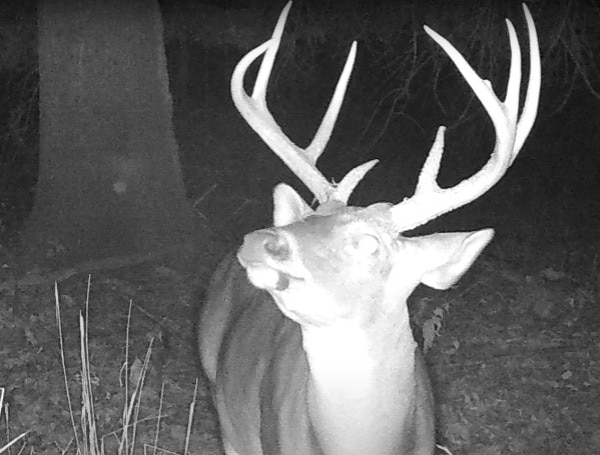The hunting industry is steeped in tradition, yet constantly adapting to new technology and methods. Hunting at night poses unique challenges and requires specialized knowledge because many game species are active at night. Deer, especially, are known for being most active during twilight and nighttime hours.
This change in behavior calls for a different hunting strategy. Recognizing and interpreting the patterns of deer after the sun sets is not just an advanced skill, but a vital one for those looking to increase their success in the field. It is a topic gaining traction within the hunting community as hunters look for ways to adapt to the elusive nature of their quarry.
This article reviews nighttime deer behavior in more detail, offering insights based on both traditional practices and contemporary research and technology. We will examine the effects of weather conditions and environment on deer activity at night. What’s more, we’ll provide practical tips on using cameras to discover deer’s nighttime patterns, leveraging advancements such as trail cam AI for more detailed analysis. Our objective is to provide hunters with the knowledge to create successful strategies and improve their hunting success.
Importance of Nighttime Deer Patterns
Understanding deer nighttime activity is essential for successful hunting. Unlike humans, who are active during the day, deer are most active at night. Deer’s natural tendency to be active at night can be both challenging and beneficial for hunters. By observing deer behavior, such as feeding, mating, and movement patterns, hunters can accurately predict the best times and places to find them.
With this knowledge, hunters can plan more strategic hunts and increase their chances of encountering deer. Mastering these patterns involves careful observation and strategic thinking, as hunters decipher the clues left by the elusive nocturnal deer.
Factors Affecting Nighttime Deer Behavior
Changes in weather, such as temperature fluctuations and rainfall, have a serious impact on the nocturnal activities of deer. On a clear and cold night, deer may move around more as they look for food to keep their energy up. In addition, the availability of food sources, such as crops or natural vegetation, strongly dictates the deer’s nighttime feeding patterns; deer will often frequent areas where sustenance is plentiful.
In areas with a lot of hunting, deer tend to move more cautiously and unpredictably at night to avoid being caught by hunters. Hunters who consider these factors have a better understanding, which helps them predict deer behavior and improves their chances of success at night.
Using Trail Cameras to Monitor Deer Activity
To better understand the night-time movements of deer, trail cameras are essential equipment for hunters. When it becomes dark, these cameras serve as the hunters’ observers, silently capturing the behavior and habits of deer. Positioned in strategic spots—where paths meet, near feeding places, or by watering holes—trail cameras document the actions during the night.
The cameras reveal much information: trends become apparent, individual deer can be recognized, and the regularity of visits to specific spots is discerned. Armed with this data, hunters can decide intelligently on where to concentrate their efforts, which may enhance their prospects of success. Beyond simple recordings of dates and times, high-tech trail cameras can offer insights into and conduct under different weather conditions, enabling hunters to modify their approach to suit the shifting climate.
Creating a Plan Based on Nighttime Patterns
After analyzing the gathered data on nocturnal deer behavior, hunters are prepared to create a specific plan to increase their chances of success. This plan might involve placing stands in areas where deer are often active or adjusting hunting times in line with the periods of peak deer activity observed. By considering the data collected – be it through direct observation or trail cameras – hunters can determine the key times and places where deer are most likely to move.
It involves a combination of knowledge about the terrain, movement patterns, and the small changes in deer behavior caused by environmental signs. Carefully choosing stand locations can take advantage of known deer paths or feeding areas, while timing the hunt to coincide with optimal deer activity increases the chances of an encounter. Such plans are changing as hunters improve their understanding of shifting patterns and increase the precision of their method.
Implementing Effective Hunting Strategies
To excel in nighttime hunting, one must not only have patience and ability but also detailed knowledge of deer nocturnal behavior. Key to improving the chances of a successful hunt is following plans that are consistent with the nocturnal patterns of deer. Hunters must carefully examine the details about the deer’s nightly routines, from feeding areas to predictable movement paths.
Through a blend of knowledge and ability, a hunter learns to detect the subtle signs that signal deer movement; it is this detection that informs decision-making—when to position oneself and when to start following. Actual hunting methods might include quiet walking, the intelligent positioning of decoys, and the use of scent concealers or signals. All these, when utilized with knowledge of the deer’s regular behavior, create a coordinated plan that greatly enhances a hunter’s chances in the darkness.
Successfully hunting deer at night demands understanding the subtle behavior patterns of deer after dusk. Deer’s nocturnal tendencies call for sharp awareness, particularly when evaluating elements like weather and hunting pressures that affect deer movement. Applying trail cameras aids hunters in identifying these patterns, providing reliable data for formulating a strategic hunting approach. Creating and following a plan founded on these behaviors distinguishes the proficient hunter. Informed by natural cycles and with thoughtful planning, such an approach is necessary to thriving in night hunting.
Help support the Tampa Free Press by making any small donation by clicking here.
Android Users, Click To Download The Tampa Free Press App And Never Miss A Story. Follow Us On Facebook and Twitter. Sign up for our free newsletter.



